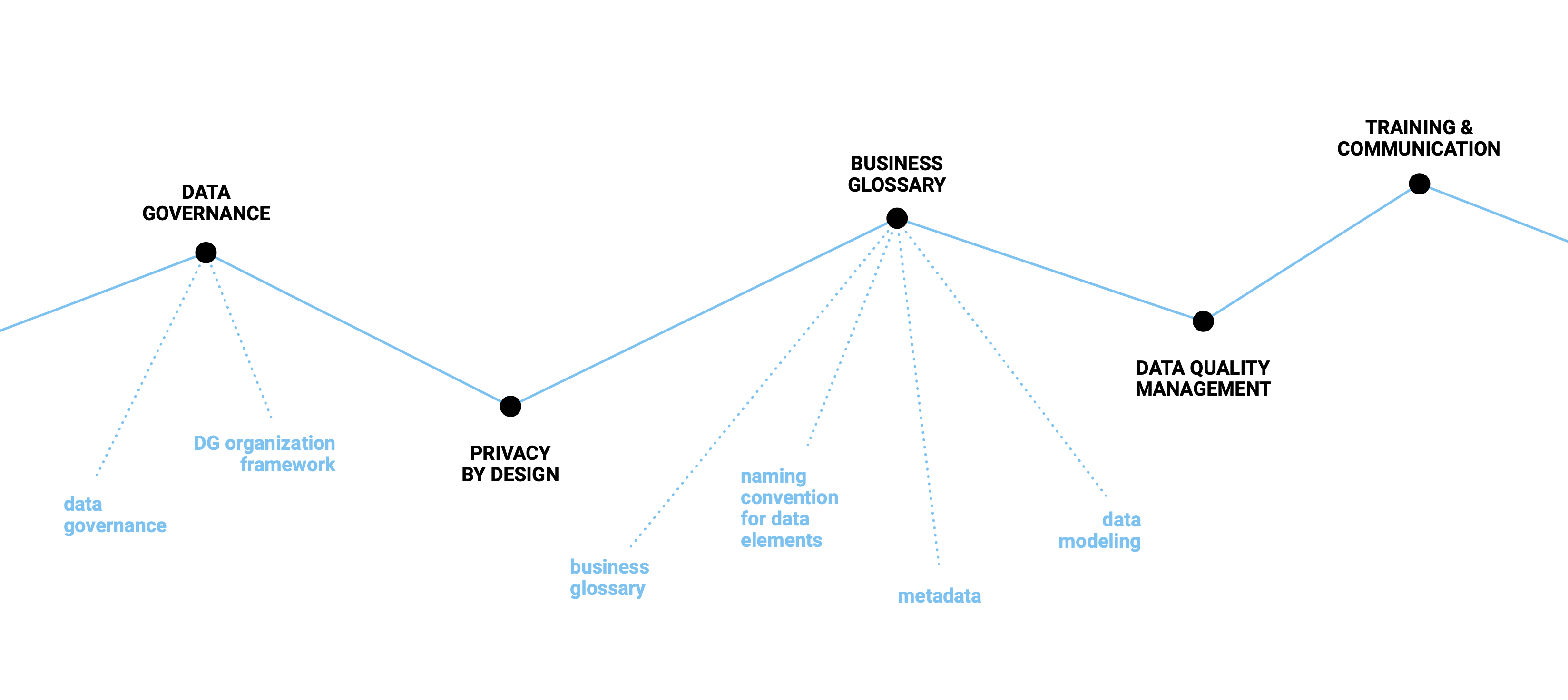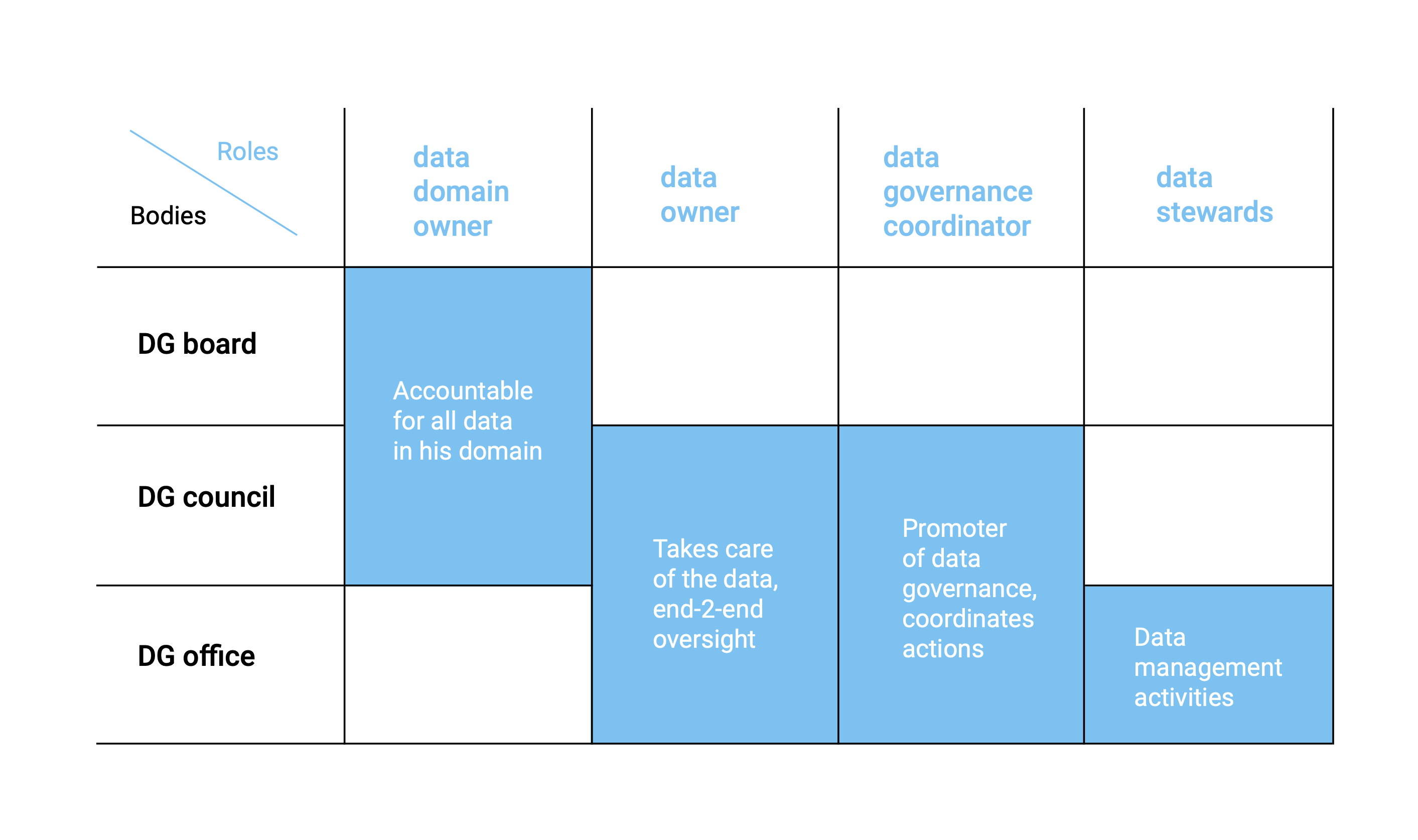The 5 Pillars of The Data Governance Framework (1/2)

A robust data governance framework is essential to exploit the value of data fully. To help companies optimise their data governance and data management, Euranova combined its knowledge of state of the art and its experience in data strategies to build its reference framework, composed of five pillars:
- Data Governance Organization
- Privacy by Design
- Business Glossary
- Data Quality Management
- Communication & Training

Thanks to the diversity of the industries that Euranova is active in, the reference framework is close to reality and actionable. Hence, the pillars described in the following article should be seen as a guide, not a cooking recipe. They represent the basis for each customer’s own data governance framework, and their implementation will be specific to each organization.
Data Governance Organization
The proposed data governance organization framework is the foundation for the establishment of successful data governance. It contains the set of rules, the description of the data governance roles and responsibilities, as well as the necessary processes to bring everyone on the same page.
Specific data governance roles are defined and assigned to people working in specific data governance bodies. These bodies work together to manage and support the data governance program. Each of them owns particular roles and responsibilities associated with each level of the Data Governance Operating Model.
For example, a data governance steering board will be set up in the organization with members of the leadership team that will each have a specific role to support the data governance framework application. They will define the business strategy and will sponsor the project along the way.
A data governance office will also be set up, composed of operational members responsible for organising and coordinating data governance activities.
Together, these bodies provide strategic leadership and tactical and operational excellence in managing data assets.

Privacy by Design
As privacy and data protection issues should be considered at the design phase of any system, service, product or process, the second pillar of the reference framework focuses on privacy by design.
The privacy by design framework has been defined after carefully reviewing the legal perspective through law articles. With that knowledge, important principles and IT requirements have been identified. We created a checklist of 90 items taking into account the processes, people, organizations, and technical elements, that allows us to assess the customer's current situation. Then, gap analysis and a list of remediation are handed over to the customer.
To ensure data protection through technology design, the privacy by design framework pursues three main goals:
- assess the existing process,
- validate the data governance organization proposed,
- list technical data enablers and data governance artefacts required to support the privacy by design strategy.
Business Glossary
The business glossary is a list of data elements with their description and other valuable information (referred to as metadata).
The purpose of the business glossary is:
- To ease the communication: everyone uses the same terms to talk about the same thing
- To have a full view over data such as a definition but also other valuable information (owner, synonym,...)
- To reduce operational friction, i.e. minimize the misuse of data due to inaccurate understanding
The main components of this pillar are:
The business glossary
The business glossary enables common understanding of the core business concepts and terminology.
Data Taxonomy & classification
Data taxonomy ensures consistent data categorization across multiple sources, processes, channels. It aggregates data in a meaningful way to the business.
Naming convention for data element
Identify where there are a number of differing definitions for the same data element - and where a number of different data elements have the same definition.
As a result, the company will have a business glossary with all its data elements listed with their business application, their unique definition and their metadata. This will become the ground truth used by the business and the technical teams whenever they deal with data.
With a strong data governance approach, you will learn to use, improve, monitor, and protect your data to drive business outcomes. In the last article of this series, we will review the last two pillars of our data governance framework: data quality management, and communication and training.
Our White Paper
You can also read our white paper that walks you through Euranova’s agile end-to-end data governance approach that will ensure better data quality, easier data accessibility and higher security for your data.